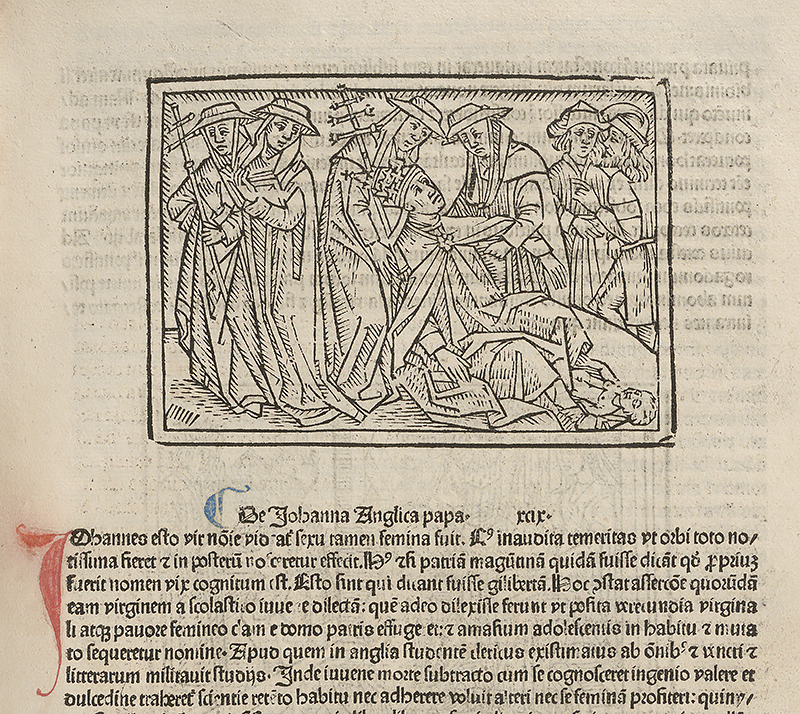
I was lucky enough to be involved in the Incunabula pilot project here in the Digital Imaging Unit. This project helped to create a digitisation workflow for Incunabula collection items using the i2S CopiBook v-shape scanner. These bound volumes are printed using a variety of early printing methods including wood block printing resulting in beautifully crafted and illustrated objects. This project afforded an opportunity to get up close and personal with these beautiful and often entertaining treasures, that were quite literally being brought into the light through the capture of images.
This particular selection spans a diverse world of medieval scholarly interest from historical accounts of the Roman empire such as De vita caesarum, and epic poetry depicting the 10 year Trojan war, in De bello troiano, to Latin narrative poetry by Ovid. It included volumes dedicated to botanical and medicinal discoveries by Dioscorides Pedanius, a collection of Aesop’s fables, and a volume dedicated to recounting the lives of famous women De claris mulieribus by Giovanni Boccaccio.
One volume I couldn’t help becoming engrossed by was Hortus sanitatis by Johannes von Cuba, a natural history encyclopaedia published around 1497. This is a treasury of all known living creatures, plants and minerals and comes complete with beautiful hand coloured illustrations as an aid to identification. Among the columns of dense Latin text the woodcuts appear as a welcome relief and stand out in their detail and colour. The volume begins with a detailed array of plants and herbs outlining their botanical uses. These are often illustrated with an interesting allusion such as the visual depiction of the mandrake plant shown here, which has roots thought to be similar in shape to the human form.
Hortus sanitatis continues with chapters divided up into creatures of the land, sky and sea, a section on minerals and concludes rather curiously with a chapter detailing the practice of uroscopy. One of the fascinating aspects of this volume is the inclusion of the mythical, on turning the pages a winged creature will appear quite innocuously, placed alongside the humble goat. The depiction of creatures with human heads is another common feature, as a snake with a human head stares out from the page surrounded by elusive Latin text. This happy co-existence of the mythical and scientific is one of the alluring features to this volume giving an otherworldliness to this compilation of the natural world.
One of the most striking volumes is Aesop’s fables, a captivating collection of stories and illustration of all the fables attributed to Aesop and the lore of Aesop’s life. The layout of each fable with its accompanying coloured illustration is the most pleasurable feature of this volume. The two-dimensional aspect of the wood cut illustration, with the innate beauty of the line drawing and shading makes compelling story telling, with each image illustrating the pithy point of each fable. These fables that once belonged to the oral tradition are now committed to the page, and were disseminated throughout medieval European cultures and languages through the act of printing and publication.

This illustration, entreating one not to trust someone who has already proved to be dangerous, is one of many striking images and moral mores that make this such a memorizing and entertaining volume. We are all so well associated with Aesop’s fables, so ingrained are they within popular culture and often condensed to a proverb that this cohesive collection is a way of revisiting these tales and seeing them in a different context.
De claris mulieribus by Boccaccio features the biographies of a selection of famous women’s lives mostly drawn from the classical world and containing such well known and feared subjects as Medusa, Eve and Isis. This collection of 104 biographies can be viewed as an educational discourse used to educate, enlighten and inspire women in advocating the folly of vice and the ideals of virtue. One of the more infamous accounts concerns Pope Joan, the first and only female pope. The story of a woman masquerading as a man and progressing through papal hierarchy to reach the position of Pope is widely regarded as fiction and the stuff of legends. However with its various references throughout literature and art, is one that garnered a place in the cultural imagination of its time and beyond throughout medieval Europe. This illustration reveals the story of Pope Joan who had the misfortune of revealing her gender by going into labor during a church procession. This illustration in its dramatic and stark form provides an interesting narrative of the attitudes towards women and their place within ecclesiastical life.

This is a somewhat small glimpse into the variation and richness that is contained within the diverse collection of incunabula and now available to view within the images collections website https://images.is.ed.ac.uk/luna/servlet/UoEgal~2~2
Joanne MacRury, Project Digitisation Assistant, Digital Imaging Unit
Be First to Comment